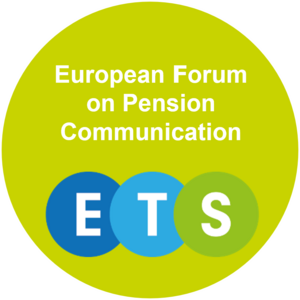A flexible ETS organization prepared for the rollout
Date: 05/2022
The ETS, in the years to come, will go through different stages of development from the perspective of user engagement, stakeholders’ involvement, services provided, technology used, etc. This is in line with the view of EIOPA that pension tracking systems (PTS) and the ETS should be developed in a step-by-step approach (see EIOPA’s Technical Advice on Pension Tracking from December 2021) as well as with our project proposal. But it also means there is not a single image of the future ETS organisation. Each of these stages will have its own requirements and challenges for the ETS organisation. The need for an organisation developing and operating the ETS had already been addressed in the initial TTYPE report. Apart from the operation, all tasks related to the legal ownership of the ETS also need to be taken care of. Finally, given the dependency of the ETS on other European organisations (for example data and content providers), stakeholder involvement needs to be organized as well.
In the Technical Advice on Pension Tracking mentioned above, EIOPA is of the view that a well-governed PTS will foster citizens’ trust and should therefore be underpinned by principles of good governance listed below:
- Non-profit
- Independence
- Credibility
- Transparency.

The public good attributes of a PTS would rule out a commercial governance model such as privately-owned, for-profit entities, hence leaving two possible governance structures of non-profit PTS: a public entity and a public–private partnership. According to the EIOPA advice, the public-private partnership model provides additional advantages such as pooling together resources, expertise and innovation from both public and private sectors and fostering the involvement from representatives of pension funds and providers.
This assessment underlines many characteristics of a governance model the project has defined when discussing starting points for the decision-making process on the legal form of the ETS. Basis for our considerations were the ETS proposal as well as the TTYPE findings. Both included a multi-stakeholder approach, a non-profit design as well as a strong cooperation between public and private entities.
The ETS in the form of a registered association
The project group compared different legal forms such as the limited liability company, the association and the foundation by using exclusion criteria which corresponded to the necessary features of the ETS. The registered non-profit association according to the German civil code and the Belgian non-profit society scored the best on all of the criteria which were among others
- A structure that incorporates stakeholder involvement, legal ownership and operation of the ETS services
- A governance model in which members govern the ETS organisation
- Non-profit, not owned by others and financially independent and
- Capability for expansion to other value propositions (like ETS as a data hub)
An initial ETS organization should be structured as a lean and effective organization, but scalable for the requirements of the ETS to be developed later with more members and connections. Therefore, it was suggested to choose a registered association under the German Civil Code as the legal form.
The basics of the proposed governance structure are:
- The basic legal structure is a registered association according to German law
- The members of the association define its purpose and direction. Membership is voluntary
- The association has statutes that describe the organisation’s goals, governance and regulations and the members responsibilities
- Members meet and decide upon key issues in the General Assembly
- The General Assembly appoints a Board that monitors the realisation of the organisation’s goals.
- NTS/PTS committee is built to secure participation in decisions regarding data exchange and presentation
The legal form of an association (eingetragener Verein) provides the necessary flexibility to allow for growth and development, as well as cost efficiency, which is of course reflected in the governance model. The association needs a non-commercial purpose to be acknowledged as non for profit. The purpose has to be defined clearly in the statutes. Bodies prescribed by law are the General Assembly and the Board. The governance model will be laid down in the statutes. All elements described have to be agreed in detail among the founding members and after discussion with the EC.
A joint task to complete the right to execute professional mobility
The task to fulfil the ETS vision and mission can only be reached in partnership. From the very beginning, the ETS was a stakeholder driven initiative. To cover the diverse pension landscapes in Europe with the different forms of pension provision, a broad participation of the players involved is needed. Setting up an association will be the way forward. This ETS association can be aligned with the concept of the Forum on Pension Communication. This network of actors can learn from each other and help shaping the further development of user-friendly pension information.
Furthermore, a balanced cooperation of the different actors in the interest of the users is essential. Working in a public-private partnership is the appropriate basis and must be provided by a fitting governance to administer and manage the service. The ETS Association seeks the membership of stakeholders from all kinds of pension provision in Europe and will also need the requirements from the Technical Advice to be recognized in its statutes. However, it is also clear that public funding is needed to secure that the ETS can operate independently, neutrally and on a not-for-profit basis.
Extract from Intermediate Report: Establishing the European Tracking Service on Pensions Project